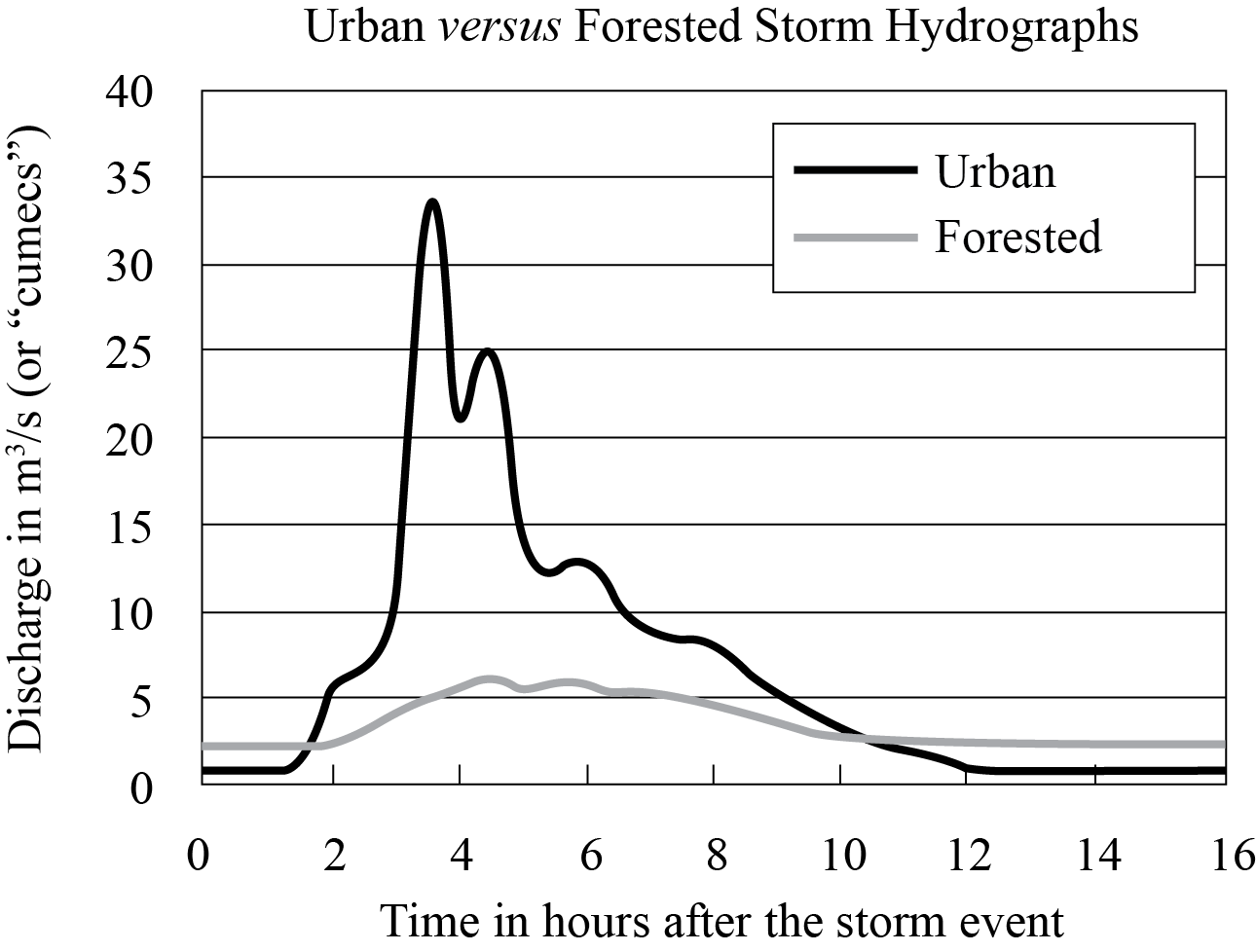| Date | November 2012 | Marks available | 10 | Reference code | 12N.2.bp.2 |
| Level | SL and HL | Paper | 2 | Time zone | |
| Command term | Examine | Question number | 2 | Adapted from | N/A |
Question
The diagram shows the response of a stream in an urban area compared with that of a stream in a neighbouring forested area after the same rainstorm event. (The basins are of similar size and drainage density.)

[Source: www.mdsg.umd.edu/images/uploads/siteimages/CQ/V07N2/urban_forest_hydrograph]
Describe four differences between the two hydrographs shown on the diagram.
Suggest reasons why the urban and forested hydrographs show different responses to the storm event.
With reference to a named river flood event, examine the relative importance of natural and human causes.
Markscheme
Differences could include:
- higher peak discharge in the urban area
- shorter lag time in the urban area
- steeper rising limb in the urban area
- the longer peak discharge in the forested area
- there may be other features e.g. differences in base flow, urban hydrograph has two peaks.
Award [1 mark] for each valid difference. For full marks there should be some quantification.
Answers should refer to the reasons for the rapid response in the urban area due to lack of interception, impermeable surfaces (roads, roofs, paving), thereby reducing infiltration, and the presence of artificial and rapid drainage channels (drains, sewers, flood channels), explaining the rapid rising limb, high peak discharge and rapid falling limb on account of overland flow/runoff.
The slower and lower response in the forested area could be explained by higher interception, the retention of water by litter, absorption by root systems, high soil and bedrock permeability.
Award [1 mark] for each valid reason suggested and award additional marks for depth of explanation (of the operation of factors and associated processes).
The flood event should be located and dated by year.
Possible natural causes could be:
- excessive heavy or prolonged rainfall including flash flooding
- rapid snowmelt
- high antecedent rainfall and/or low rates of evaporation
- frozen ground preventing infiltration
- relief or basin shape conducive to flooding
- the nature of the soil/bedrock.
Possible human causes might include:
- removal of vegetation/deforestation
- urbanization of river basins
- farming methods that cause soil compaction
- river control that reduces flood arrival times downriver
- river control that results in higher peak discharge downriver
- straightening of river channels
- removal of wetland areas.
Not all of the above need to be included but the causes must be related to the named river flood event. Answers that do not refer to an actual event should not move above band C. Answers that examine the relative importance of human and natural causes are likely to be credited at bands E and F.
Marks should be allocated according to the markbands.
Examiners report
Generally, most candidates were able to identify four relevant differences, though the use of appropriate terms such as lag time, rising limb and base flow was frequently absent. Weaker candidates could not clearly identify the elements of the hydrograph, often leading to vague and expanded attempts to describe the differences, even merely describing the shape of the two graphs without knowing what they represented.
Good understanding was shown in the majority of cases although there were descriptive answers that did not focus on the stream responses of the hydrograph.
Many candidates who responded well to parts (a) and (b) did badly on part (c). Too many named a country but not an actual named river flood event (which needed to be located and dated). A few used outdated case studies. Bangladesh was a commonly used case study, but in many cases there was no mention of the name of the river. Some attempted to look at relative importance of the natural and human causes but tended to be descriptive and answered in general terms concentrating on the effects not the causes. In these cases, human causes were poorly covered. Good responses could succinctly analyse the various factors that supported their stance and those that did well used a wide range of factors to support their conclusion.

